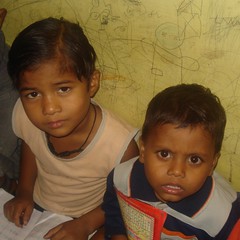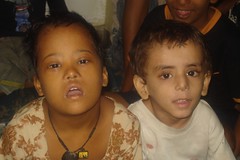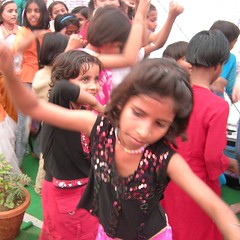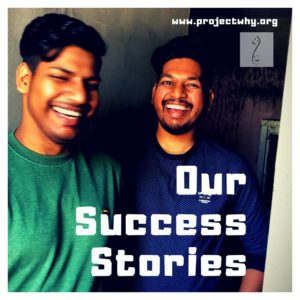
by Anuradha Bakshi | Oct 23, 2008 | Uncategorized
 Ho’oponopono means to make it right. It is an ancient Hawaiian healing technique that can be applied to any problem or difficulty. The reason why I talk of this today is because of an incident that occurred yesterday and that left me quite baffled.
Ho’oponopono means to make it right. It is an ancient Hawaiian healing technique that can be applied to any problem or difficulty. The reason why I talk of this today is because of an incident that occurred yesterday and that left me quite baffled.
The daughter of a dear friend came to me with a problem seeking the right answer. She was on her a way home in a three wheeler when a small accident occurred involving a bigger car. No real harm was done and the protagonists could have continued their journey without much ado, But that was not to be. The occupants of the car forced the rickshaw to stop and pulled the driver out and started bashing up violently. The poor man kept apologising profusely but to no avail. The beating and abusing carried on mercilessly. My little friend tried to glare at the perpetrators but that seemed to have the opposite effect as the miscreants decided to play to the gallery. A small crowd gathered, mostly simple workers and bystanders. The enraged men shouted at them and they too dispersed. Someone gently told the young to take another ride home.
The young girl came home visibly shaken by the incident. What disturbed her most was the fact that she had walked away and not been able to help the poor rickshaw driver. She wanted me to tell her what she should and could have done. She felt like a coward for having walked away.
We sat for a long time trying to find an answer, and sadly in the given circumstances and situation there was none. Rage that seems to have become the order of the day. The arrogance of the rich and the helplessness of the poor provide the right stage for such incidents that seem to be the rule rather than the exception. And once again we seem to be healing the effect and not the cause. The true answer lies elsewhere. In ourselves more than in others but are we willing to look inwards.
I looked for answers too, larger ones and that is when I remembered ho’oponopono. It is a code of forgiveness whereby you have to accept as being the cause of everything that surrounds you and learn to forgive not only others but yourself. The problem with things around us today is that we thrive in the blame game and never accept our part of responsibility let alone begin to forgive. The men in the car could have simply forgiven the rickshaw driver and moved on. The young girl has also to forgive herself for having walked away.
It is time we all learnt to ho’oponopono.

by Anuradha Bakshi | Oct 21, 2008 | Uncategorized
 When did you last say thank you to the man who washes your car, the one who delivers your newspaper or the one who collects your garbage every day. When did you smile at the lady who leaves her children to come and look after yours? When did you look into the eyes of the waiter who served you your coffee while you sat laughing with your pals? A mail from the founder of dream-a-dream reminded us all of just that. He said: Change, I believe, will have to happen in two-ways. One, empowerment of the vulnerable who can stand up for their dignity, respect and rights as an equal in society and at another, more difficult level, empowerment and sensitization of the community of people like us who over generations have become immune to the prejudices and biases we exercise in our daily lives.
When did you last say thank you to the man who washes your car, the one who delivers your newspaper or the one who collects your garbage every day. When did you smile at the lady who leaves her children to come and look after yours? When did you look into the eyes of the waiter who served you your coffee while you sat laughing with your pals? A mail from the founder of dream-a-dream reminded us all of just that. He said: Change, I believe, will have to happen in two-ways. One, empowerment of the vulnerable who can stand up for their dignity, respect and rights as an equal in society and at another, more difficult level, empowerment and sensitization of the community of people like us who over generations have become immune to the prejudices and biases we exercise in our daily lives.
As we sit watching the market crashing and stocks tumbling and dolefully counting our losses, it is perhaps time to take a peep into ourselves and see what we have truly lost. If we do so with honesty and candor we will be compelled to realise that over the years we have lost our ability to care, love, give an reach out to others. Hubris took hold of us in more ways than one, and we lived insulated little lives protecting what we had been taught to believe as being the only asset of true value. We had all become targets of what a friend called financial terrorism. A very insidious form of terrorism as it does not operate through violent and visible attacks, but feeds on surreptitiously creating large than life dreams in innocent people’s lives, dreams that are waiting to crash.
It was almost two years ago that I wrote about my fears about plastic money and bank loans reaching the pockets of the poor. But the adversary was too big for me, the terrorist forces were at work and the dreams too tempting to resist. It has been two years since the loan was taken. The money was used in a day to add veneer to a wedding. And since that fateful day the little family of 5 has had to live with half a salary, the other half being used to pay the dreaded EMIs. This is just one instance. There are innumerable others.
But was this post not about saying thank you! or rather about the importance of getting past our prejudices and fears, of reclaiming lost values like compassion and empathy. I somehow feel that it is the new mantra we have all been taught to chant that is the cause of such a behaviour. In a world where the material, the visible and the transient are valued, there is no place for the immutable, the permanent and the invisible.
Maybe it is time to reclaim lost values and make them part of us. Maybe it is time to garner the courage to look at those we take for granted and whisper a simple thank you. I am sure that we will be the ones truly gratifies. I an never forget the beggar woman who many years back thanked me warmly not for having given her a coin or banknote, but for having simply looked into her eyes and told her that I was sorry i did not have anything to give!

by Anuradha Bakshi | Oct 17, 2008 | two indias
 Today, I was treated to one of my best moments at pwhy. The day began normally and nothing would have prepared me for what was to come. As I was about to leave the office I asked my colleagues what was their plan for the day and they answered that they were going to the senior secondary section as the students were having an English Debate competition. I must confess I was a tad vexed at not having been invited but I said nothing and went my way.
Today, I was treated to one of my best moments at pwhy. The day began normally and nothing would have prepared me for what was to come. As I was about to leave the office I asked my colleagues what was their plan for the day and they answered that they were going to the senior secondary section as the students were having an English Debate competition. I must confess I was a tad vexed at not having been invited but I said nothing and went my way.
As luck would have it an appointment got canceled and I found myself with time on my hands and decided to make my way to the senior secondary and be part of the debate. I do not know whether my move was apreciated but everyone played by the book and I was greeted with warmth by all. A dozen boys were in the class room and just one girl. The students were mostly from class XII, XI, X and IX. Some time later three girls joined the group. Though initially a debate had been planned, Gunjan the English teacher sprung a surprise on his nervous wards. Everyone was to chose a topic and speak for at least a minute. The new dictate was met with bewildered looks, nervous glances and uncomfortable stances but the teacher was relentless. After brief introductions it was time for the first speaker to address the audience.
The next hour was an absolute delight in more ways than one. The topic selected by the students were varied and showed a great deal of maturity and wisdom. Child marriage, dowry menace, terrorism, education, environment, importance of doctors were some of the chosen topics. Some spoke with confidence, some with some hesitation but each one stood proudly in front of an audience where some were outsiders and shared their dreams, hopes, fears and aspirations in a language they were learning to master. I must confess that for once the boys outdid the girls.
Young Ravi who bagged the coveted first price took my breath away. He chose an unexpected and somewhat trite topic – traffic – and in 1.50 seconds painted a socio-economic canvas of today’s India. Ravi’s English would be considered by many as wanting, his construction faulty and his grammar poor but he managed to convey everything he set out to, vindicating my firm belief that language is a communication tool and should be viewed as such.
Ravi’s speech was a delight. He used stunning metaphors and images to convey what he wanted. The one that bowled me over was: the roads are houseful – to convey the state of traffic on Delhi roads. In his nascent English, Ravi talked about the misplaced egos of Indians where families had not one, not two but four cars! He talked of the car companies always coming up with bigger and newer models to tempt consumers. He mentioned increased pollution and subsequent health hazards. He even touched upon the apocalyptic scenario that waits us with the arrival the low cost Nano that would make roads even more houseful! He even highlighted the fact that in other countries people were content with two cars per family. He ended by saying that he walked the talk as he had neither car nor bike. What a stunning little speech it was, delivered with passion and aplomb.
Everyone shared their views with sensitivity. It was a moving moment as I sat and listened to the hopes and fears, the likes and dislikes of these wonderful and yet forsaken children of India. Here they were rearing to go but we had assured that they would run the race of life with tied hands. The education doled out to them was nothing short of mediocre, one that even with the best effort would never enable them to win the race.
And yet as I watched them, all I saw was winners who had beaten all odds and were determined to break glass and lead ceilings and it accrued to us at pwhy to help them do so. It was also a proud moment as many of those who stood in front for me were toppers in their schools thanks to the efforts of our precious teacher Naresh. While introducing themselves they had also shared what they wanted to be: math teachers, chartered accountants, computer engineers, pilots, were some of their aspirations.
I left the room with a silent prayer to the God of Lesser Beings, entrusting these precious dreams to his care.

by Anuradha Bakshi | Oct 15, 2008 | Uncategorized
 It is that day of the year when I remember Kamala, my mother. Last year on this very day I dedicated our women centre to her. Kamala was an extraordinary woman in more ways than one, a true free spirit in times were women were often relegated to the shadows. She was passionate about many things but what she cherished the most was education, something she achieved with great difficulty and strife. When I decided to open a women centre it had to be dedicated to her memory. Today one year down the line, it is time to ask whether the women centre is worthy of the one whose name it bears.
It is that day of the year when I remember Kamala, my mother. Last year on this very day I dedicated our women centre to her. Kamala was an extraordinary woman in more ways than one, a true free spirit in times were women were often relegated to the shadows. She was passionate about many things but what she cherished the most was education, something she achieved with great difficulty and strife. When I decided to open a women centre it had to be dedicated to her memory. Today one year down the line, it is time to ask whether the women centre is worthy of the one whose name it bears.
The Kamala centre is a placed filled with joy, laughter and a palpable energy. In the span of a short year it has over 200 children and long waiting lists. Over 50 women come each day to learn stitching of beauty skills to enable them to slowly take the road to financial independence. One a week there is a women’s meeting where many topical and sometimes. disturbing issues are debated while sipping tea and nibbling on biscuits. Till now the women have talked about gender bias, child abuse, women’s rights, girl child, HIV and much more. Simpler issues have also been discussed: hygiene, balancing household budgets, saving, immunisation and insurance. On a lighter vein and on popular demand there was also a pasta cooking session where the women were taught how to make pasta in tomato sauce!
The Kamala centre also has a library, that is even open on Sundays. The children are thrilled and consider the library as one of their most precious possession. Not a single book has been torn or misplaced. The Kamala centre is a vibrant place. It is not simply a study centre but a true children centre, one that they consider their very own. They celebrate festivals and come to play in it after working hours. It is a place where children know they can reclaim their right to be children and they do!
The centre may be just a year old but it is imbued by Kamala’s spirit and a reflection of all she believed in. It holds in custody the dreams of aspirations of a many: children on their way to a new tomorrow; women slowly getting empowered. It is a place where people of all caste, creed, social background come together as one in a true celebration of life itself.

by Anuradha Bakshi | Oct 13, 2008 | fostercare, okhla
Normally it is left to me to blow the project bugle and list its achievements. Not an easy task I must confess. A few days back Megha our Asha stewart was here for the yearly mandatory site visit. She spent a few days at pwhy interacting with staff and children. When she sent me a copy of the report I felt I was looking at pwhy through fresh, candid and honest eyes and was vindicated in many ways and truly overwhelmed. I share the report with all of you.

Project Overview:
Project Why (pwhy) runs a number of centres that provide after school education for children from slums. They also have creches, a centre for disabled children and adults, and a women centre. We supported about half their budget in FY 2007-2008. They have recently begun an initiative, Planet Why to generate income that could be used to support the activities of Project Why.
Site Visit
PWHY was started by Mrs Anouradha Bakshi in 1998 as an endeavour to return her debt to society. It started with English classes for kids from the Govindpuri slums. In a decade they have grown to 13 different centres reaching out to approximately 600 children in three low income/slum areas of New Delhi. The field coordinators are Shamika (her daughter) and Rani (a resident of Govindpuri). Mrs Bakshi is the big picture person and chief fundraiser. Shamika and Rani handle the day to day logistics of pwhy which includes speaking with students, parents, managing teachers and resolving any type of community issue that crops up in their classes. Shamika has trained to work with autistic children and Rani has a degree in nursing. Rani is in fact a product of pwhy, having been one of its first students.
My site visit was spread over a period of one week where I was very cordially taken around the various centres, introduced to teachers and was able to have exhaustive discussions with Anou, Rani, Shamika, Barbara (a visiting volunteer from UK who worked with the British civil services) and Mr. Dharmendra (who runs the women’s centre).
Visit to centres
Pwhy office is located in Govindpuri, gali no 3. A narrow lane leads up to a three story building that the project owns. The ground floor is for mentally and physically challenged children and adults. They are divided into three groups based on the level of their disability. The first floor is a creche for children from 1.5 to 3.5 yrs of age. The disabled children and creche babies are picked up from their homes and dropped off to the centre each morning. The second floor is a primary after school centre and the final landing has an office and small kitchen. Across this building is the foster home and another primary after school centre in a rented accommodation. In Govindpuri, gali no 1 is another creche where I was treated to nursery rhymes and number recitation. Many kids were absent due to a flu that was making the rounds.
A five minutes ride away is a primary after school centre located in the very heart of the Govindpuri slums. A labyrinth of narrow lanes, criss-crossing many homes, kirana shops and recycling businesses leads to a single storey rented accommodation. A gutter along the homes was chock full of unhealthy and smelly sewage. In spite of this I landed into a neat, clean and odor free classroom with children bent over their books and two teachers administrating over 3rd and 4th standard boys. Teacher: student ratios were about 1:10 but this fluctuates with time as the after school program is voluntarily attended by children. I doubt if I would find this classroom without Shamika and Rani seeing as a dizzying circuitous route is needed to reach it!
A ten minutes ride away is the Okhla primary after school centre. This centre has an interesting history. Ms. Sophiya, one of the teachers who has been with pwhy for 7 years urged Anou to start a centre in Okhla slums because the Govindpuri centre was too far for the children and could not in fact accommodate more children. After much debate with the community, one room brick building (10’ X 20’) was built. This structure was repeatedly broken by miscreants from the locality over a period of one year. In Shamika’s words – “Saturday we would lock the room and on Monday nothing would remain.” Pwhy remained persistent and by focusing on their educational activities they were able to convince the community to embrace the learning centre. Today, outside the room a boundary wall has been erected and children sit out here, under a canopy, since they are too many to be accommodated into the room. The roof leaks, there’s a rudimentary toilet since the slum has no plumbing and the kids have to sit through hot summer months under one fan or huddle together in the one room during cold winters. In spite of this the teachers remain resilient and kids look very happy.
Located in the Sanjay colony slums, a five minutes ride from Okhla is another primary education centre. Situated on the first floor, this primary centre has three teachers who were busy with their charges when we visited. The door was locked because dogs were using the ground floor as a sleeping area and bothering the children.
The furthest away is the women’s centre located a twenty-minute ride away from pwhy office, in the Sarita vihar village. This centre runs independently solely due the perseverance of Mr Dharmender, the manager of this centre. Dharmenderji has been with pwhy for 8 years and started as a teacher. Realizing his potential and interest in taking on a bigger role Anou has made him sole in charge for the women’s centre. His commitment and passion are evident by the amount of progress he has made in just 8 months since the inception of this centre. It took several months for him to find the right space and convince a landlord to rent it to an NGO. The interior was then re- designed to accommodate a creche, sewing class room, beautician’s class room, library, room to house women, a kitchen and, a primary as well as middle level after school program. The after school kids occupy space on the terrace under a canopy bravely withstanding the heat (they have only two coolers so children sit close to it by rotation – another innovation by Dharmenderji). Not only does he run the entire outfit but he’s also called on each day to resolve the myriad problems of his students and parents. The after school programs are so successful that he has started a waiting list!
He’s also done a remarkable job with the women who stay at the residential centre. Junoon, who was diagnosed with bipolar disorder was ably handled each time to calm down. She was in rehab when I visited. Having querulous women is also a problem with the neighbouring community who will not tolerate this type of behaviour making his negotiation and diplomatic skills all the more valuable. Dharmenderji is grooming the centre to function independently from him by setting up processes that encourages the various teachers to take more initiative and ownership in their endeavours. Dharmenderji will take over the administrative running of planet why and is wholly committed to making it a reality. Meanwhile his thoughtful, humble and intelligent manner have greatly distinguished his contribution to pwhy and I can’t think of a better manager for planet why.
The women’s centre was also a pilot program to see how project why can run a centre far away from the main office as well as one that ran numerous activities. So far the pilot has been successful and the problems they have had to set it up have provided valuable lessons that they can apply to planet why.
At the Girinagar slums is another rented accommodation. This is located 10 minutes from the main office. The ground floor contains a computer centre that is open to the public. Internet is available at a nominal rate of Rs. 10 per hour and computer classes are also administered here. The first floor is the domain of Mr Naresh perhaps, the most beloved of teachers at pwhy. He teaches maths to the senior secondary students andserves as a valuable role model to all his students. There’s also a library here. From the last batch a student called Janaki ranked 13th in the Delhi CBSE board exams. There aren’t as many senior maths teachers so his role is invaluable. It has been difficult to expand high school after school programs since there are too few maths teachers who can teach in Hindi at that level.
General comments and observations
All centres and classrooms are spotlessly clean. Students are responsible for cleaning them after class. The walls are decorated with charts and the children’s handicrafts. There’s a white board in each centre that is being used as per need – in some they have taken the place of blackboards and in some they are activity boards while in others they have a timetable. It’s particularly nice to have these instead of chalkboards because in the crowded small classrooms chalk dust causes discomfort.
All teachers (except from women’s centre) meet during noon to partake in the daily lunch together. The lunch is provided by pwhy in the terrace of the Govindpuri office. This ritual is very useful as it serves as a forum for the teachers to discuss their problems with Shamika and Rani and between themselves. They exchange stories and solutions. A valuable bonding time has been established.
All pwhy’s transport is taken care of by three autos that are driven by parents of children that attend the schools. They are full time employees of the NGO and they are indispensable. They cart children from various homes in slums to the creche ensuring that the children come to school and ferry Shamika and Rani, and their daily rounds of various centres.
- An unusual feature of pwhy is that teacher retention is high. Two contributing factors to this are All teachers are local i.e., they live in or very close to the slums where they teach
- Teaching provides employment to people who would otherwise have to do manual labour.
One example is Ms Sophiya of the okhla centre who is belongs to the SC/ST class and was unable to get employment as a teacher although qualified for it. Since pwhy doesn’t run schools it can employ people who don’t have teaching degrees but have had an education such as the two brothers Sanjay and Vikki who are lohars (migrants from the blacksmith gypsy community) and lived in a slum that was broken down. They teach the primary classes and if not for pwhy they would not have been able to get good jobs that would use their education.
Over all teachers at pwhy are very proud oftheir work and derive satisfaction from the respect and adoration they receive from the parents and children. Indeed, they are looked upon gratuitously byparents who otherwise, would have treated them with contempt just because of their caste!
There have been exceptions. A few years ago one centre had to be closed because teachers were taking extra tuitions for the children who attended their classes and charged them for the service; essentially they used pwhy for recruitment and space to further their tuition business.
- Except for the foster children and staff no child is explicitly provided with lunch.Most children eat their meal at the govt school under the mid day meal scheme. Children who come to the creche bring their own lunch. I was surprised by this, but Shamika gave me the reason – pwhy feels that parents need to take some responsibility towards the care of their children. The 9-5pm creche provides a safe environment for children of families where both parents work and no one can stay behind to take care of the child. Since pwhy takes a nominal Rs 1/ day per family the lunch acts as an alternate reminder to the parents that they too are participants in the child’s upbringing and not to take pwhy’s role for granted. Of course children who do not bring their lunch are given a portion from the staff lunch.
- Teachers are keen to learn English. An English teacher from US, Ms. Nina plans to work with them to improve their English as well as their teaching methods to grasp the language. Speaking good English is perhaps the best confidence that we can give these children.
- The foster home was an inadvertent addition to pwhy. Encouraged by the donor who was to fund planet why these children were taken in as the first batch of entrants to planet why. When the donor quite abruptly pwhy decided that they had given too many dreams to these children to send them back to their homes (if they had any!) and has continued to take care of them. All except the disabled children will be placed in a boarding school next year. Many are older than they appear but were malnourished and with no education when they were brought in. They have been attending a kindergarten and have caught up to Std 1 education. These children would be a good match for the Support-A-Child program. Anou has already identified an appropriate boarding school for them.
- The boy’s come to school in the morning and girls in the afternoon because the govt school is open for girls in the morning and boys in the afternoon.
- Pwhy attempts to provide a little more than after school education; they are very careful not to refer to their centres as tuition centres as they try and provide a holistic and not just academic education. They have sponsored various open heart surgeries.
- Another nice thing about their processes is that it is very open to change. The organization has a constant influx of volunteers – mostly foreign who spend time here in various capacities. They also interact with other NGOs, most recently with Praxis that carried out a SWOT (Strength, Weakness, opportunities, threats) on their employees.
Overall impressions
Project Why is a vibrant, dynamic organization that works with flexibility and love in the community that they serve. Their teachers are passionate and committed. Ithas a flat organizational structure encouraging its teachers to innovate and share their ideas. The strongest fear the teachers have is what happens if Anou passes away. Although Rani and Shamika are the logistical branches of pwhy it’s Anou’s unflagging spirit and fundraising effort that keeps pwhy running. Her energy is the strength of her teachers. Anou recognizes this and is trying to work towards a model where all her centres are community owned and run. This might take a while to be realized given that some parents are so overwhelmed that even the nominal Rs 1/ day is out of their reach or sometimes they are unwilling to be equal partners because they want things for free. Rani and Shamika are being encouraged to participate in fundraisingactivity. So far their small efforts ( selling raffles in the community or at a college fest)have been resource intensive and without good returns. India being the land of judging a
book by its cover has led them to feel under confident in corporate settings. It’s ironic since these two girls are the ones who interact with each child, parent and teacher in pwhy! I’m sure given the right impetus they will soon take a more proactive role in fundraising.
Asha-Seattle currently supports approximately half of pwhy’s budget and I certainly felt our project partner had exceeded their mission statement and our donor money is going towards building a more educated society.
Project Why
Location: New Delhi
Site Visit Report
25th – 3rd Oct 2008

 Ho’oponopono means to make it right. It is an ancient Hawaiian healing technique that can be applied to any problem or difficulty. The reason why I talk of this today is because of an incident that occurred yesterday and that left me quite baffled.
Ho’oponopono means to make it right. It is an ancient Hawaiian healing technique that can be applied to any problem or difficulty. The reason why I talk of this today is because of an incident that occurred yesterday and that left me quite baffled.










